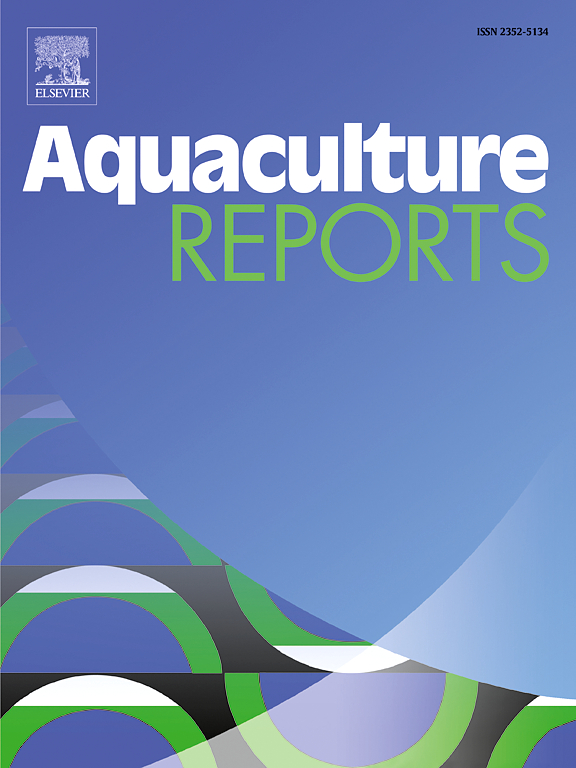Comparative transcriptome analysis reveals potential regulatory mechanisms in response to changes in physiological functions in Oreochromis aureus under salinity stress
IF 3.2
2区 农林科学
Q1 FISHERIES
引用次数: 0
Abstract
Oreochromis aureus is an economically valuable fish species, but its domestication in saline environments remains unexplored, with limited reports on how salinity stress affects its physiological functions and acclimation-related mechanisms. Thus, this study collected O. aureus exposed to different salinity stress levels (0 ‰, 3 ‰, 7 ‰, and 11 ‰) and analyzed their growth performance, histopathology, physiological functions, and transcriptome. The results showed that salinity stress had no significant effect on growth performance. Salinity stress damaged gill tissues, decreased physiological and antioxidant activities, increased osmotic and antimicrobial activities, and altered digestive functions. Comparative transcriptome analyses identified 38,910 differentially expressed genes (DEGs), of which 11,488 were common to the three comparisons. These DEGs were significantly associated with specific salinity stress response-related KEGG pathways, including Sphingolipid signaling pathway, Lysosome, Phagosome, and Focal adhesion. The present results identify 1 GO term (regulation of biological proces) in response to salinity stress. Furthermore, 15 candidate genes related to salinity stress responses and physiological functions were also identified. (e.g., TLR2, NCF2, Sptlc2, and ctsd). On the basis of GO, KEGG and STEM analyses, the data enabled the development of a mechanistic model that details how O. aureus adapts to salinity stress by regulating physiological changes. Finally, RT-qPCR assays verified the accuracy and reliability of the high-throughput sequencing results. This study enhances our understanding of O. aureus adaptive strategies under salinity stress, while also providing relevant theoretical insights into the domestication of fish under saline conditions and the mechanisms mediating adaptations to saline aquatic environments.
求助全文
约1分钟内获得全文
求助全文
来源期刊

Aquaculture Reports
Agricultural and Biological Sciences-Animal Science and Zoology
CiteScore
5.90
自引率
8.10%
发文量
469
审稿时长
77 days
期刊介绍:
Aquaculture Reports will publish original research papers and reviews documenting outstanding science with a regional context and focus, answering the need for high quality information on novel species, systems and regions in emerging areas of aquaculture research and development, such as integrated multi-trophic aquaculture, urban aquaculture, ornamental, unfed aquaculture, offshore aquaculture and others. Papers having industry research as priority and encompassing product development research or current industry practice are encouraged.
 求助内容:
求助内容: 应助结果提醒方式:
应助结果提醒方式:


